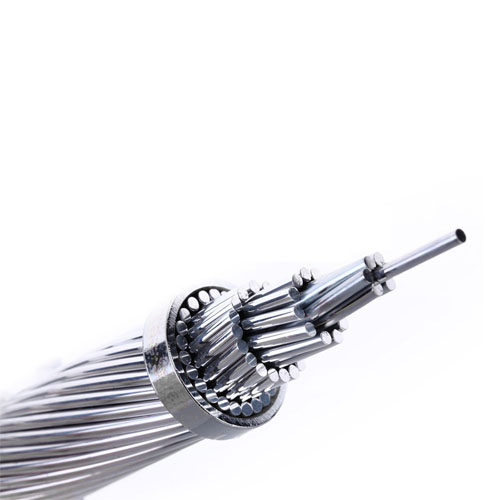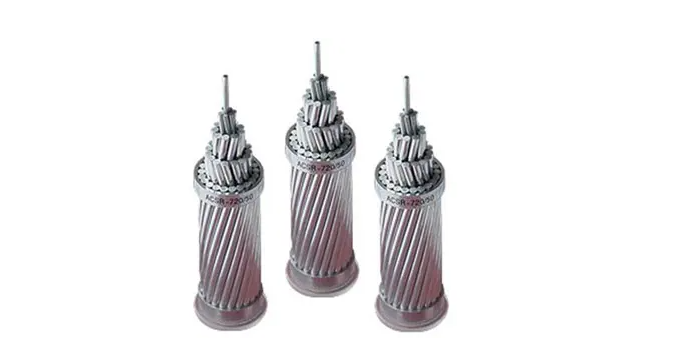Magnet wire or enameled wire is a copper or aluminium wire coated with a very thin layer of insulation. It is used in the construction of transformers, inductors, motors, speakers, hard disk head actuators, electromagnets, and other applications that require tight coils of insulated wire.
The wire itself is most often fully annealed, electrolytically refined copper. Aluminium magnet wire is sometimes used for large transformers and motors. The insulation is typically made of tough polymer film materials rather than enamel, as the name might suggest.

Conductor
The most suitable materials for magnet wire applications are unalloyed pure metals, particularly copper. When factors such as chemical, physical, and mechanical property requirements are considered, copper is considered the first choice conductor for magnet wire.
Most often, magnet wire is composed of fully annealed, electrolytically refined copper to allow closer winding when making electromagnetic coils. High-purity oxygen-free copper grades are used for high-temperature applications in reducing atmospheres or in motors or generators cooled by hydrogen gas.
Aluminium magnet wire is sometimes used as an alternative for large transformers and motors. Because of its lower electrical conductivity, aluminium wire requires a 1.6-times larger cross sectional area than a copper wire to achieve comparable DC resistance.
Insulation
Although described as "enameled", enameled wire is not, in fact, coated with either a layer of enamel paint nor with vitreous enamel made of fused glass powder. Modern magnet wire typically uses one to four layers (in the case of quad-film type wire) of polymer film insulation, often of two different compositions, to provide a tough, continuous insulating layer. Magnet wire insulating films use (in order of increasing temperature range) polyvinyl formal (Formvar), polyurethane, polyamide, polyester, polyester-polyimide, polyamide-polyimide (or amide-imide), and polyimide.
Polyimide insulated magnet wire is capable of operation at up to 250 °C. The insulation of thicker square or rectangular magnet wire is often augmented by wrapping it with a high-temperature polyimide or fiberglass tape, and completed windings are often vacuum impregnated with an insulating varnish to improve insulation strength and long-term reliability of the winding.
Self-supporting coils are wound with wire coated with at least two layers, the outermost being a thermoplastic that bonds the turns together when heated.
Other types of insulation such as fiberglass yarn with varnish, aramid paper, kraft paper, mica, and polyester film are also widely used across the world for various applications like transformers and reactors. In the audio sector, a wire of silver construction, and various other insulators, such as cotton (sometimes permeated with some kind of coagulating agent/thickener, such as beeswax) and polytetrafluoroethylene (Teflon) can be found. Older insulation materials included cotton, paper, or silk, but these are only useful for low-temperature applications (up to 105°C).
For ease of manufacturing, some low-temperature-grade magnet wire has insulation that can be removed by the heat of soldering.[4] This means that electrical connections at the ends can be made without stripping off the insulation first.

Cross-section
Smaller diameter magnet wire usually has a round cross-section. This kind of wire is used for things such as electric guitar pickups. Thicker magnet wire is often square, rectangular or hexagonal (with rounded corners) in cross section, packing more efficiently and having greater structural stability and thermal conductivity across adjacent turns.
Classification
Like other wire, magnet wire is classified by diameter (AWG number, SWG or millimeters) or area (square millimeters), temperature class, and insulation class.
Breakdown voltage depends on the thickness of the covering, which can be of 3 types: Grade 1, Grade 2 and Grade 3. Higher grades have thicker insulation and thus higher breakdown voltages.
The temperature class indicates the temperature of the wire at which it has a 20,000 hour service life. At lower temperatures the service life of the wire is longer (about a factor of 2 for every 10 °C lower temperature). Common temperature classes are 105 °C, 130 °C, 155 °C, 180 °C and 220 °C.
Current density
In practice maximum current density can vary from 2.5 A/mm2 for a wire isolated from free air to 6 A/mm2 for a wire in free air.[citation needed] If the wire is carrying high frequency currents (above 10 kHz) the skin effect may affect the distribution of the current across the section by concentrating the current on the surface of the conductor.
If active cooling is provided by blowing air or circulating water much higher current densities can be achieved - proportionally to the effectiveness of cooling.
An aluminium wire must have 1.6 times the cross sectional area as a copper wire to achieve comparable DC resistance. Due to this, copper magnet wires contribute to improving energy efficiency in equipment such as electric motors.
Applications
Magnet wire is used in windings of electric motors, transformers, inductors, generators, headphones, loudspeaker coils, hard drive head positioners, electromagnets, and other devices.